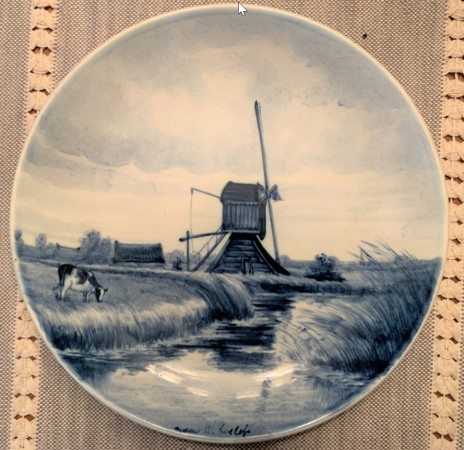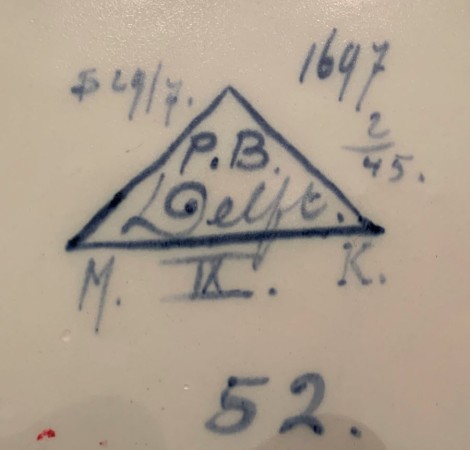Blue and white plate with artwork depicting a Dutch landscape; windmill in the center with cow grazing near a canal.
Vraag
I'm not able to determine the mark of this plate. My great grandfather brought this with him to America and I'd like to know more about its origin and the artist. Thank you sincerely for any information.
Afmetingen
23.5cm diameter
Collectie
publiekscollectie














Reacties 5
Hello,
After a quick google search I have found that your plate was produced by Plateelbakkerij Delft, they originated in Amsterdam in 1897 but moved to Hilversum in 1902 and produced under this name until 1928. Hope this little bit of information will help you find out more about your great grandfather’s plate.
Kind regards, Patrick
In reply to Hello, After a quick google… by PatrickW492
Hello Patrick,
Thank you so much for the reply! I honestly wondered if I'd get any response and certainly didn't think it would come so quick! Are you able to share how you searched the information? I also tried google but came up empty handed? Again, thank you for your efforts and time. It's truly appreciated.
Have a blessed day,
Nathan
In reply to Hello Patrick, Thank you so… by graathenry
Hi Nathan,
I searched for P. B. Delft in google images and looked for an item that had the same marks as your plate. A few results came up (and it helps that my native language is Dutch).
Kind regards, Patrick
Op het bord zie ik staan: naar W. Roelofs.
Is gekopieerd naar een schilderij van Willem Roelofs (1822-1897), ’Molen bij Abcoude’, was een impressionistisch schilder, het origineel bevindt zich in Kunstmuseum Den Haag, groet jvdh. (vertaling Google).
Verdict:
Analysis:
This plate was indeed produced by Plateelbakkerij Delft. This particular mark was in use between 1903-1915. The M is probably the signature of the painter (sorry can't identify that), the IX is the month (September) and K stands for the year: 1912. (Source: Nederlandse keramiek en glasmerken 1880-1940 by M. Singelenberg van der Meer).
Thank you PatrickW and Jan van den Heuvel!
Add new comment
Only logged in users can post comments
Log in or register to post comments